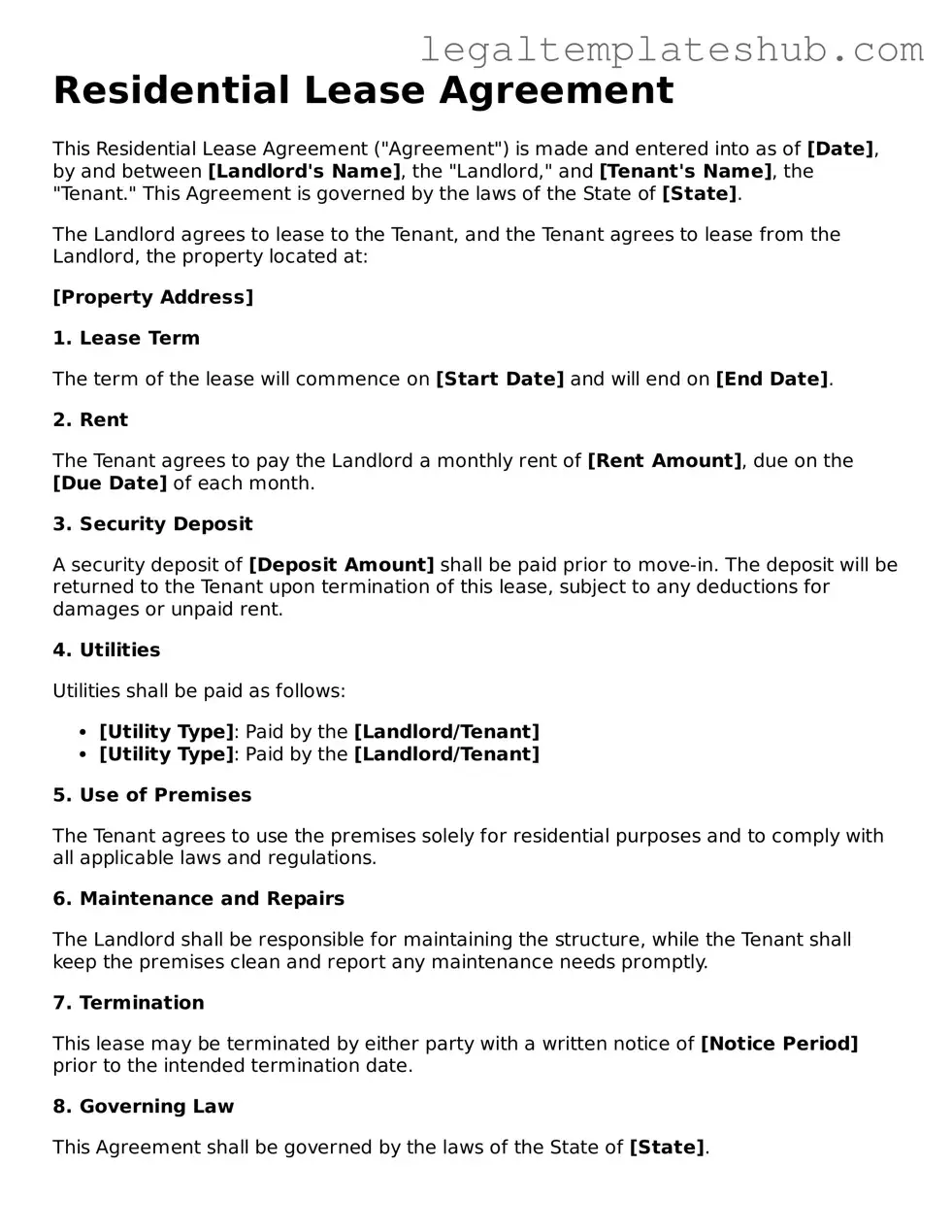Printable Lease Agreement Template
A Lease Agreement form is a legal document that outlines the terms and conditions under which one party agrees to rent property owned by another party. This agreement serves to protect the rights of both the landlord and the tenant, ensuring that expectations are clear and enforceable. Understanding the details of this form is crucial for anyone involved in a rental arrangement.
Ready to take the next step? Fill out the Lease Agreement form by clicking the button below.
Access Editor
